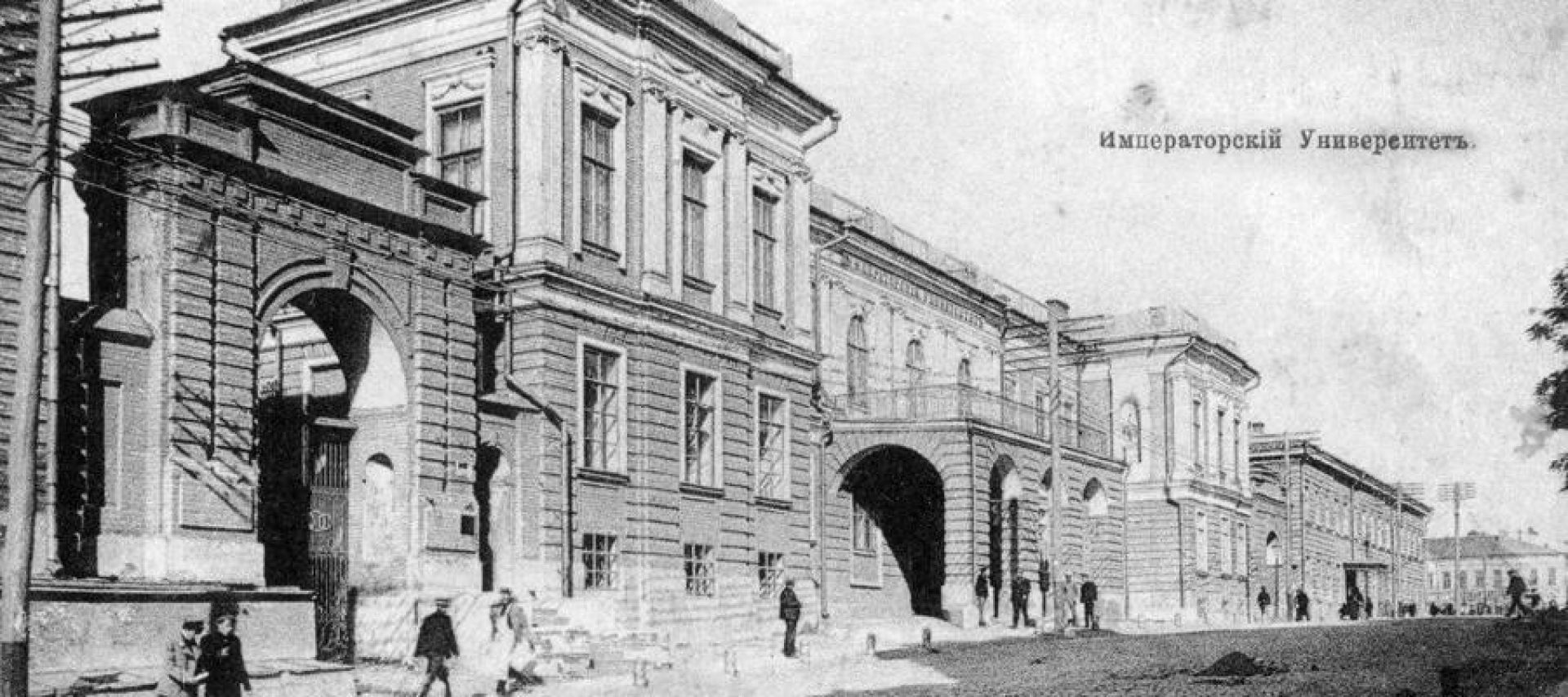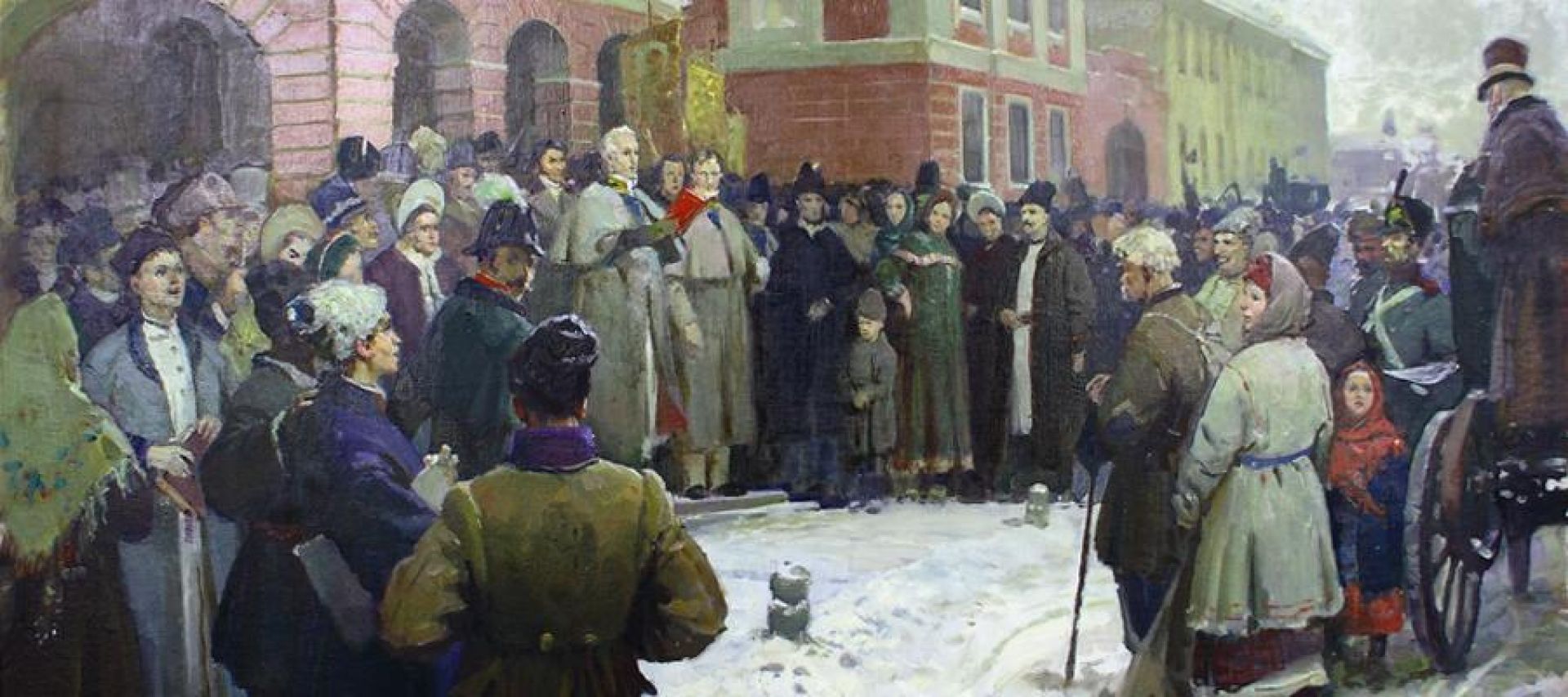History of the University

Kharkiv National University is one of the oldest universities in Eastern Europe. It was founded in November 1804 on the initiative of the prominent educator V. N. Karazin, in accordance with the Charter of Tsar Alexander I.

The opening ceremony took place on January 29, 1805. The University has written many brilliant pages in the history of the Ukrainian national renaissance of the XIX-XX centuries. It gave a powerful impetus to the transformation of Kharkiv into a major scientific and cultural center, the academic capital of Ukraine. Today, the University rightfully occupies the highest positions of all-Ukrainian rankings among classical universities and is well known far beyond Ukraine.
The history of Kharkiv National University is part and parcel of the intellectual, cultural, and spiritual history of Ukraine. The names of world famous researchers, scholars, and educators are associated with Kharkiv University, among them are P. Hulak-Artemovskyi, O. Lyapunov, M. Kostomarov, M. Barabashov, M. Beketov, D. Bahalii, A. Krasnov, M. Ostrohradskyi, V. Steklov, O. Potebnia, O. Pohorielov, and many others.
Kharkiv University is the only university in Ukraine where three Nobel Prize laureates studied and worked: biologist Ilya Mechnikov, economist Semen Kuznets, physicist Lev Landau.
At different times, the titles of the University Honorary Member and Doctor Honoris Causa were conferred on outstanding scientific and cultural figures of different countries: J. W. Goethe and A. Humboldt, I. Franko and L. Tolstoy, P. Semenov-Tyanshanskiy, and others.
Among the University Doctors Honoris Causa was the first President of Ukraine Mykhailo Hrushevskyi.
The University published the first Ukrainian newspapers and journals, established the first scientific societies.
Over 130,000 people have graduated from the University during its existence. The names of the University alumni are immortalized in geographical names, names of space objects, plants and minerals, laws and formulae. About 60 University graduates have become full and corresponding members of the National Academy of Sciences of Ukraine.
Kharkiv has developed into a large industrial, scientific, and cultural center thanks to the University’s activity. Many streets of the city are named after professors, researchers, and alumni of the University.
The University stood at the origins of all higher education in Kharkiv region. Its offspring are the National Law Academy, the National Pharmacy Academy, Kharkiv Medical University, Kharkiv Pedagogical University, Kharkiv Zoo Veterinary Academy, Kharkiv Academy of Culture, Kharkiv University of Economics, and other institutions of higher education.
Today, the University has 20 Schools: School of Biology; School of Geology, Geography, Recreation and Tourism; School of Ecology; School of Economics; School of Foreign Languages; School of History; School of Computer Sciences; School of Medicine; School of Mathematics and Computer Sciences; School of
International Economic Relations and Travel Business; School of Psychology; School of Radio Physics, Biomedical Electronics and Computer Systems; School of Sociology; School of Physics and Energy; School of Physics and Technology; School of Physics; School of Philology; School of Philosophy; School of Chemistry; School of Law; and the Education and Research Institute «Karazin Business School».
16,800 students (or 20,300 degree candidates), 255 postgraduate and doctoral students study at the Schools, the Center for International Education, the Center for Pre-University Education. 440 doctors of sciences, professors, more than 1,242 PhDs, associate professors take part in scientific research and training of specialists. Among the University employees are 24 academicians and corresponding members of the National Academy of Sciences of Ukraine and branch academies.
V. N. Karazin Kharkiv National University offers 115 majors and specializations, covering the whole scope of modern classical university education.
About 30% of the University’s annual enrollment are school medalists, another 10% are winners of the third and fourth stages of All-Ukrainian Olympiads for schoolchildren.
The University is one of the largest research centers in Ukraine. It covers practically all areas of modern fundamental science. It incorporates the Research Institute of Chemistry, the Research Institute of Biology, and the Research Institute of Astronomy.
The University employs 20 academicians and corresponding members of the National Academy of Sciences of Ukraine and branch academies, and 50 winners of the State Award. More than 20 world-famous scientific schools, 19 Thesis Committees for defense of doctoral and PhD dissertations actively work at the University. The University researchers annually publish about 60-65 monographs, collections of research papers, over 2,000 articles and abstracts and hold 20-25 international conferences.
The University is the main research organization of several international space programs. The University researchers cooperate with scientists from the USA, Canada, Germany, Turkey, China, Japan, Switzerland, Bulgaria, Great Britain, and other countries under international programs.
Since 1808, the Astronomical Observatory has been operating at the University. It is one of the leading astronomical institutions of Ukraine engaged in fundamental and applied research on solar physics, planets, asteroids, comets, and satellites.
The University Botanical Garden was founded in 1804. It is the oldest botanical garden in Ukraine, which is a state preserve with a unique collection of plants representing various botanical and geographical zones of the world.
The University Museum of Nature, founded in 1807, is one of the oldest university museums in the world. Every year, it opens its doors to 22,000 visitors. Its 23 rooms (total area is 2,000 square meters) feature about 250,000 exhibits organized into the following sections: the Descent of Humans, Darwinism, Zoology, and Geology. The University has the Museum of Archeology with a collection of about 150,000 items.
The Central Scientific Library of Kharkiv National University was founded on January 30, 1805. By the decision of the Ministry of Culture of Ukraine (1987), it was recognized as an institution of special public importance. The total collection of the Library contains 3,500,000 items, including 50,000 unique editions (17 incunabula, over 1,000 manuscripts, 300 palaeotypes; lifetime publications of classics of literature, science, and culture).
In October 1999, according to the decree of the President of Ukraine, Kharkiv University gained the status of a national university and was named after its founder, V. N. Karazin.
In 2003, according to the decree of the President of Ukraine, V. N. Karazin Kharkiv National University received the highest status of a self-governing (autonomous) state higher education institution.
In February 2010, according to the Resolution of the Cabinet of Ministers of Ukraine, V. N. Karazin Kharkiv National University received the status of a research university.
V. N. Karazin Kharkiv National University is involved in extensive international cooperation and is an active member of the international community of leading European and world universities. It cooperates with 61 partner organizations in 25 countries of the world.
In 1988, together with other major European universities, Kharkiv University signed the Great Charter of Universities that initiated the Bologna Process.
The University is a co-founder of the Eurasian Association of Universities and member of the International and European University Associations, the European Nuclear Education Network Association.
In November 2019, Kharkiv University celebrated the 215th anniversary since the signing of the Affirmative Charter on its founding, and in January 2020 it marked the 215th anniversary of the opening.
The University President is Vil Bakirov, Doctor of Sociology, Full Professor, Academician of the National Academy of Sciences of Ukraine and Corresponding Member of the National Academy of Pedagogical Sciences of Ukraine, Merited Worker of Science and Technology of Ukraine.


